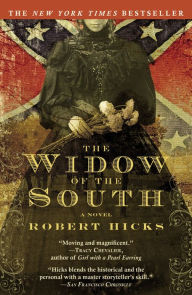Kathleen Winsor has written a number of historical romances, including The Lovers and Robert and Arabella.
Forever Amber
Paperback
- ISBN-13: 9781556524042
- Publisher: Chicago Review Press, Incorporated
- Publication date: 09/28/2000
- Series: Rediscovered Classics Series
- Pages: 976
- Sales rank: 133,855
- Product dimensions: 5.50(w) x 8.50(h) x 2.00(d)
.
Abandoned pregnant and penniless on the teeming streets of London, 16-year-old Amber St. Clare manages, by using her wits, beauty, and courage, to climb to the highest position a woman could achieve in Restoration England—that of favorite mistress of the Merry Monarch, Charles II. From whores and highwaymen to courtiers and noblemen, from events such as the Great Plague and the Fire of London to the intimate passions of ordinary—and extraordinary—men and women, Amber experiences it all. But throughout her trials and escapades, she remains, in her heart, true to the one man she really loves, the one man she can never have. Frequently compared to Gone with the Wind, Forever Amber is the other great historical romance, outselling every other American novel of the 1940s—despite being banned in Boston for its sheer sexiness. A book to read and reread, this edition brings back to print an unforgettable romance and a timeless masterpiece.
Customers Who Bought This Item Also Bought
-
- The Wild Rose
- by Jennifer Donnelly
-
- Into the Wilderness…
- by Sara Donati
-
- The Thorn Birds
- by Colleen McCullough
-
- Mary Anne
- by Daphne du Maurier
-
- Shadowy Horses
- by Susanna Kearsley
-
- The Boleyn Inheritance
- by Philippa Gregory
-
- Meridon (Wideacre Trilogy #3)
- by Philippa Gregory
-
- The Rose Garden
- by Susanna Kearsley
-
- The Widow of the South
- by Robert Hicks
-
- Captive Queen: A Novel of…
- by Alison Weir
-
- The Kingmaker's Daughter
- by Philippa Gregory
-
- Galway Bay
- by Mary Pat Kelly
-
- The Clan of the Cave Bear…
- by Jean M. Auel
-
- War and Remembrance
- by Herman Wouk
-
- My Name Is Mary Sutter: A…
- by Robin Oliveira
-
- Scarlett: The Sequel to…
- by Alexandra Ripley
-
- The Winter Rose
- by Jennifer Donnelly
-
- Secrets from the Past: A Novel
- by Barbara Taylor Bradford


















